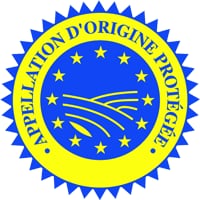Using additives in the fight against…additives
The Finnish Food Safety Authority Evira, which participates in the EU-wide Food Fraud Network has introduced a DNA bar code system, making it possible to establish the origin of a foodstuff.
According to Annikki Welling, senior Evira researcher: "DNA barcoding is used for species identification. It is based on amplifying a small portion of a gene that differs slightly but in a detectable way from species to species... It was first used for taxonomic studies and now it is also applied for food fraud investigations."
US company DNA Trek has developed synthetic unique DNA ‘barcodes’ which can be sprayed onto the surface of the food for better traceability.
Founder and CEO of DNA Trek, Anthony Zografos said “The DNATrax material is odourless, colourless and tasteless. It has already been approved as a food additive by the FDA and it is completely safe for human consumption. The amount of DNATrax material that we would expect to be on a piece of produce would be in the range of ten billionths of a gram.”
The DNA spray has not yet been approved for the European market but will be commercially available in the US in 2015. It can be added at any stage of the food manufacturing process – at the farm, packaging plant or in the retail shop.

Meanwhile European cheese producers are already adding special strains of lactic acid to origin-protected cheeses, which can then be DNA tested should the product’s authenticity be questioned. The added lactic acid bacteria do not change the taste, texture or composition of the cheese.
Beware the backlash
Yet Mintel analyst David Turner warns that consumers could react against the fact that more additives are being used in an attempt to guarantee a product’s authenticity or naturalness:
“On one hand this could help counter fears over food scares and boost trace-ability. For instance more than two thirds of European consumers agree they want to know where their vegetables come from and similar numbers in Germany, Italy and Spain are concerned about the food-safety of fruit and vegetables.
“However (…) this does bear all the hallmarks of consumers’ fears over "Frankenstein food" and too much science involved in standard foodstuffs. There could be push back from consumers or lobbyists concerned over additives in food.”
Cost effective
As well as being cost-effective, Annikki Welling says that DNA testing is particularly useful for foods which have been so purified that they no longer contain easily identifiable DNA:
"A synthetic bar code can be embedded into a product that normally comes out without any DNA, such as olive oil. In the laboratory tests, the encapsulated DNA is isolated, and thus the origin or production chain of the foodstuff can be traced.”
Other methods of determining the purity of olive oil – such as identifying the fatty acids using advanced chromatography – are more expensive and complicated, she said.
For Welling, consumers should not be worried about the safety of food whose DNA has been altered.
“The reasons for doing this are often linked to authenticity and not safety – the consumer may not taste the difference but producers want to claim that they have an original product”
“Similar types of bacteria are already naturally present in cheese, and DNA is an inert molecule anyway so I don’t think this should be a problem for consumers.”
Last year the University of Portsmouth estimated that food fraud cost the UK food industry a massive £11bn each year.
Counterfeit foods and the technology being developed to fight it will be featured at the conference ChemBio Finland 2015 (in Finnish), an event open to the public, on 18 - 19 March 2015.
